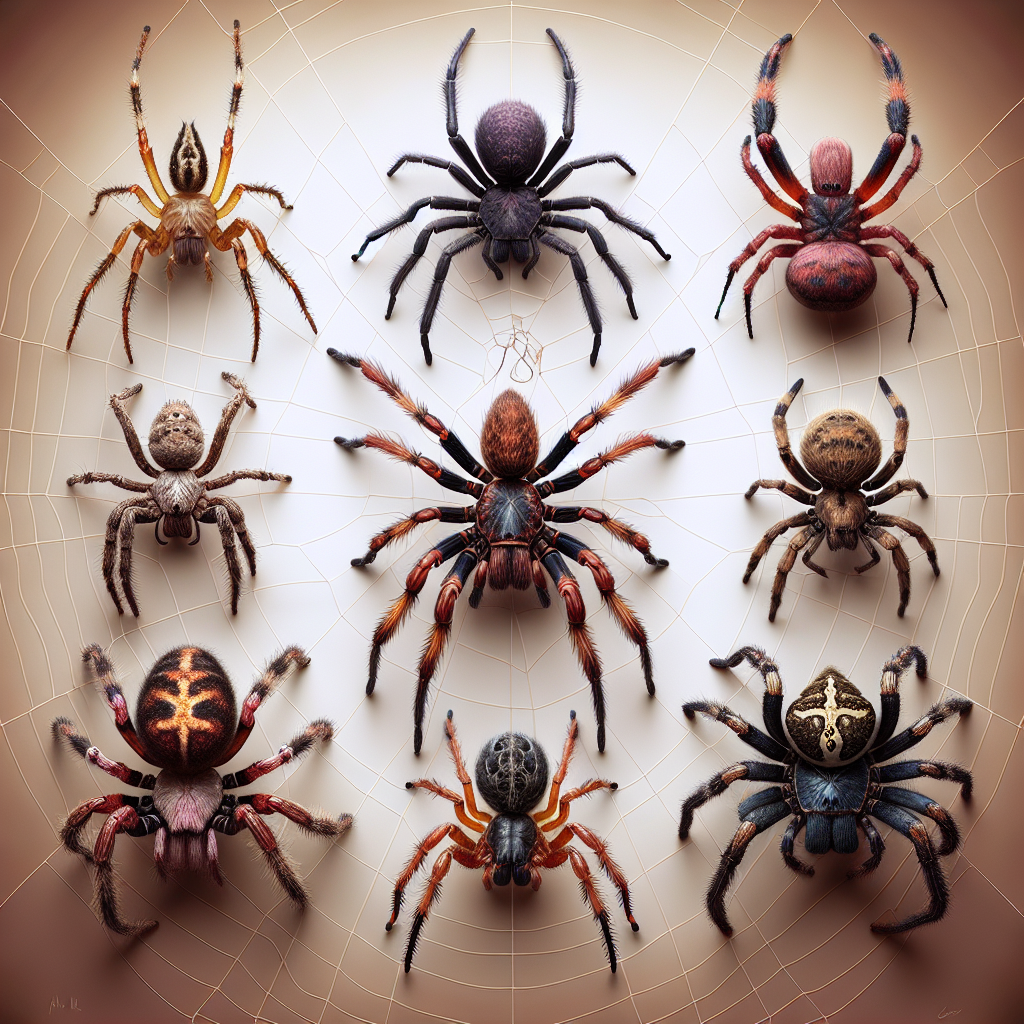
The 7 Most Poisonous Spiders in the World
Publication Date: July 23, 2024
Spiders are fascinating creatures, but some of them can also be very dangerous. We will explore the 7 most venomous spiders in the world, those with potent venom capable of causing serious harm to humans. It’s important to know them not only out of curiosity but also to know how to act in case of an unfortunate encounter.
From the feared Black Widow to the lesser-known Sand Spider of Sechura, each of these spiders has unique characteristics and venom that vary in toxicity. Join us to discover more about these impressive arachnids and how we can protect ourselves from them.
Here is a list of the most venomous spiders:
- Black Widow
- Brown Recluse Spider
- Brazilian Wandering Spider
- Yellow Sac Spider
- Sand Spider of Sechura
Let’s dive into the intriguing world of these spiders and discover what makes them so dangerous!
Black Widow
The Black Widow is undoubtedly one of the most known and feared spiders in the world. Its scientific name is Latrodectus, and it can be easily identified by the distinctive red hourglass on its shiny black abdomen.
A Black Widow bite can cause severe symptoms such as intense pain, muscle cramps, and spasms. Although its venom is very potent, human deaths are rare due to the availability of effective medical treatments.
Black Widows prefer dark and quiet environments such as:
- Garages
- Basements
- Firewood piles
It is crucial to take caution when cleaning or moving objects in these places. Additionally, make sure to wear gloves and protective clothing to minimize the risk of bites.
Brown Recluse Spider
The Brown Recluse Spider, scientifically known as Loxosceles reclusa, is famous for its potent venom and reclusive behavior. Native to the United States, it is recognized by the distinctive violin shape on its cephalothorax.
The venom of this spider can cause skin necrosis, leading to painful and slow-healing ulcers. In severe cases, the venom can affect internal organs and cause systemic symptoms.
They prefer to inhabit dark and secluded places such as:
- Attics
- Corners of closets
- Behind furniture
To avoid encounters with the Brown Recluse Spider, it is essential to keep storage areas clean and well-organized. Use gloves and carefully check clothes and shoes before wearing them.
Brazilian Wandering Spider
The Brazilian Wandering Spider, also known as Phoneutria, is famous for being extremely aggressive and having one of the most potent venoms in the spider world. Native to the jungles of South America, this spider is known for wandering in search of prey, increasing the chances of unfortunate encounters with humans.
The venom of the Brazilian Wandering Spider contains neurotoxins that can cause intense pain, muscle control loss, and in extreme cases, respiratory difficulties. One of the most unusual symptoms in men is priapism, a painful and prolonged erection.
These spiders prefer to hide in dark and humid places such as:
- Plants and leaves
- Clothes and shoes left on the floor
- Small and dark spaces in homes
To avoid encounters with the Brazilian Wandering Spider, it is vital to carefully check clothes and shoes before using them, especially if they have been on the floor. Additionally, we should keep our homes clean and clutter-free to reduce places where these spiders can hide.
Yellow Sac Spider
The Yellow Sac Spider is scientifically known as Cheiracanthium and is distinguished by its pale yellow color and small size. Although not as famous as the Black Widow or Brown Recluse Spider, its venom is still a concern.
A bite from this spider can cause localized pain, redness, and in some cases, mild necrosis. Symptoms are usually less severe than those of other venomous spiders, but it is still important to seek medical attention if you have an adverse reaction.
Yellow Sac Spiders prefer environments such as:
- Garden plants
- Window corners
- Corners of ceilings and walls
To minimize the risk of bites, it is essential to keep garden areas clean and pruned. When working in the garden, wear gloves and carefully check plants and tools before handling them.
Sand Spider of Sechura
The Sand Spider of Sechura, scientifically known as Sicarius terrosus, is a spider native to the desert regions of Peru. This mysterious spider blends perfectly with the sandy environment, making it difficult to detect.
The venom of the Sand Spider of Sechura is extremely potent and can cause severe skin necrosis. In some cases, the bite can lead to tissue destruction and require urgent medical intervention.
It prefers to inhabit desert and sandy areas such as:
- Sand dunes
- Rocky areas
- Under stones
To avoid encounters with this spider, it is advisable to wear protective clothing and appropriate footwear when walking through desert areas. Additionally, carefully check the ground and surroundings before sitting or resting in the desert.
Now that you know the 7 most venomous spiders in the world, it is crucial to be informed and take precautions. Although these spiders may seem terrifying, most encounters with them can be avoided with some simple measures.
Keeping our homes and storage areas clean and organized, wearing gloves and protective clothing when working in dark places, and carefully checking clothes and footwear before using them are essential steps. The key is to be proactive and aware of the environments where these spiders might inhabit.
Remember, knowledge is power. Knowing how to identify these spiders and understanding the symptoms of their bites can make a difference in an emergency situation. If you ever find yourself in a risky situation, seek medical attention immediately.
We hope this journey through the world of venomous spiders has been as fascinating as it is educational. Stay safe and keep exploring the incredible animal kingdom with us.
